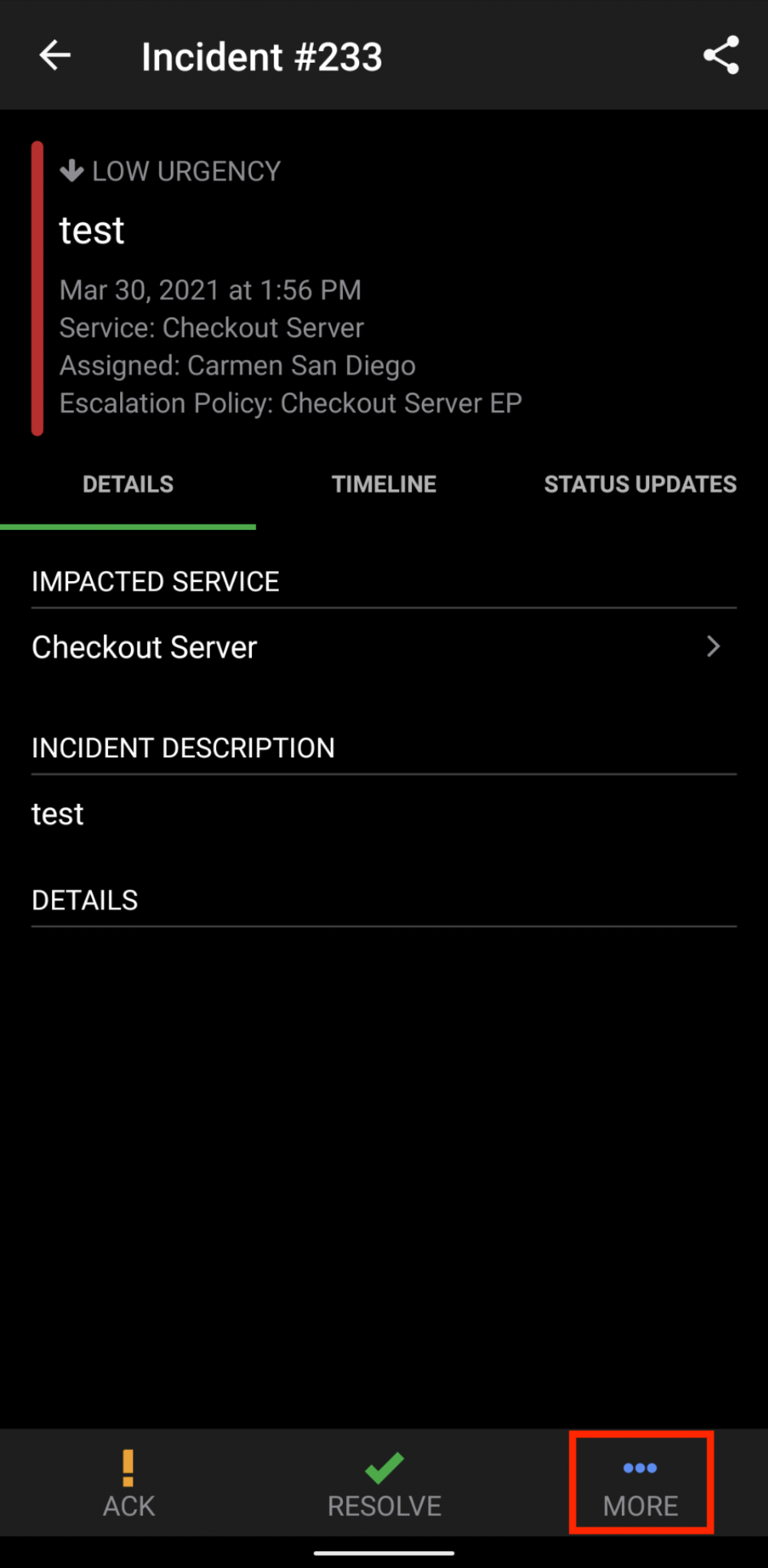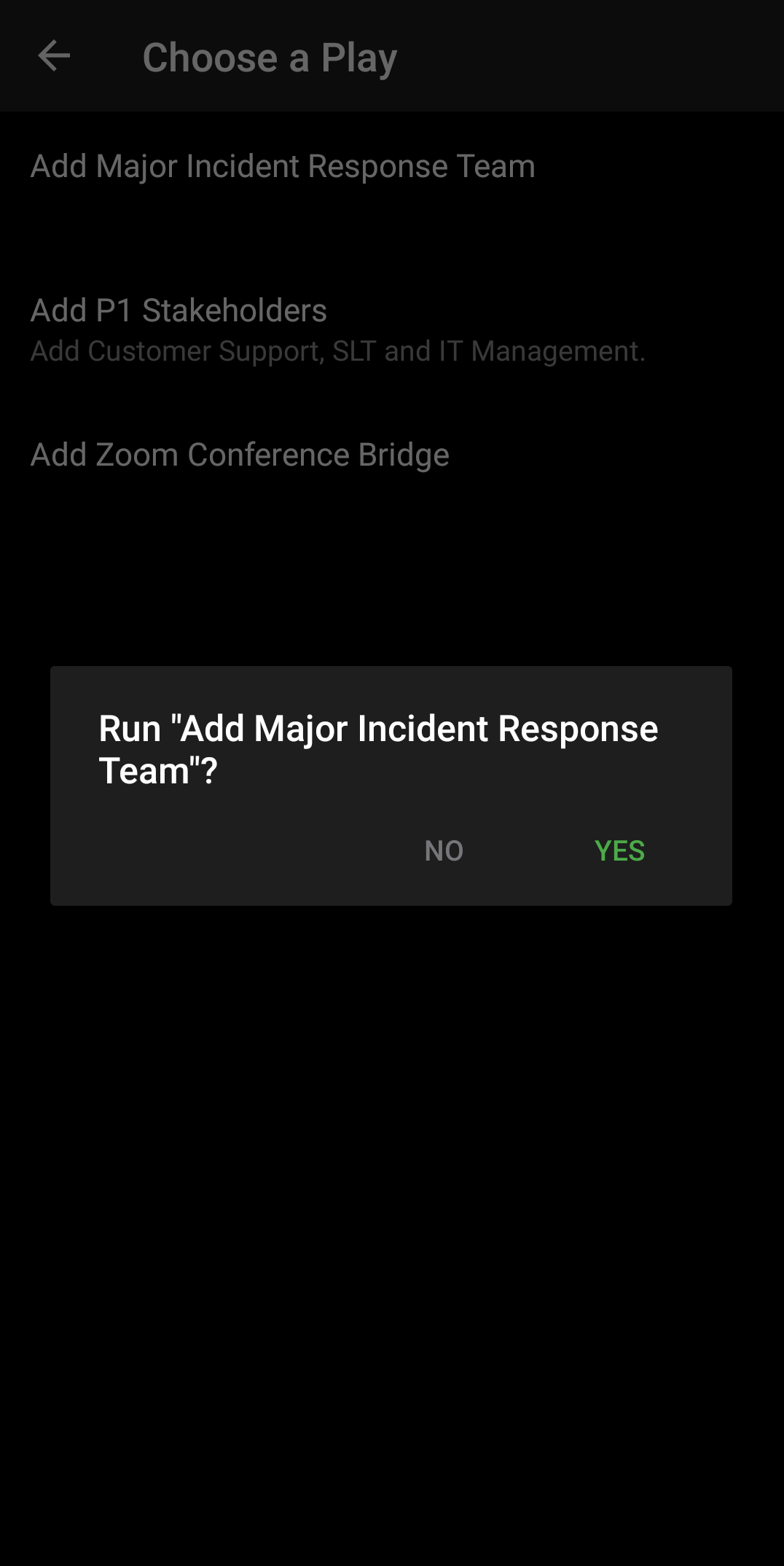Response Plays
Create packaged incident actions that can be run at the push of a button, or automatically at incident creation
Response Plays End-of-Support: Upgrade to Incident Workflows
- In January 2023 we released a powerful new Incident Workflows capability. With these Workflows, customers will be able to define if-this-then-that logic to effortlessly trigger a sequence of common incident actions.
- Because Incident Workflows are a more robust and powerful version of Response Plays, we will be working to upgrade accounts from Response Plays to Incident Workflows, ultimately culminating in a Response Plays end-of-life in June 2024.
- If you have already upgraded to Incident Workflows or you are a new customer, you will not see the Response Plays feature in your account.
- Please read Upgrade Response Plays to Incident Workflows for details and frequently asked questions about the upgrade process.
Response Plays allow users to create packages of incident actions that can be applied at the push of a button, or that can be immediately applied to all new incidents created on a service. This feature enables users to take a complex activity, like assembling a response team of multiple responders and an incident commander, and make it available to anyone that needs to use it. Grouping these actions into a reusable play has several benefits:
- Turn documented processes into executable objects.
- Reduce the opportunity for errors and mistakes while following incident response processes.
- Drastically cut down the time taken to execute incident response processes.
Response Play Actions
The current set of actions that can be a part of a response play include:
- Add a Conference Bridge: View the conference bridge details on the incident details page.
- Mobilize a Response: Notify responders other than the assignee to help resolve the incident.
- Engage Stakeholders: Subscribe people who are not directly involved with resolving the incident to receive status updates.
- Publish Status Updates: Send a prepared status update to all subscribers attached to the incident, to keep them aware of the incident’s progress.
Create A Response Play
Required User Permissions
Manager, Global Admin or Account Owner base roles can create response plays. At this time, Team-based roles do not have the ability to grant Response Play creation access to other users without these base roles.
- Navigate to Automation Response Plays.
- Click the New Response Play button. Enter a Name and an optional Description and Team.
- Next, select your preferred settings options:
What should happen when this play runs?
| Setting | Options/Instructions |
|---|---|
| Add a conference bridge | - Meet with Zoom: Zoom will automatically attach a one-time meeting URL when this response play is run. - Manually enter conference bridge details: Enter a Dial-in Number and/or Meeting URL. |
| Notify responders other than the assignee to help resolve the incident | - Search and select Escalation Policies and/or Users to add as responders. - Send the default message to the responders: Please help me with " incident title" incident URL- Send a custom message to responders: Enter a custom message. Responders will be able to tap on the phone number and/or video call URL directly from the SMS they receive. |
| Subscribe people who are not directly involved with resolving the incident to receive status updates | Search and select Users or Teams to subscribe to the incident. |
| Publish a status update to all subscribers | Enter the status update message that you would like to be sent when the response play is run. |
Who can run this play on demand?
- No one can run this play on demand (For automated use by services only): This ensures that the play will not be suggested to responders when looking at an incident. This is useful for plays attached to services that automatically trigger incidents.
- All incident responders: This play will be shown to all responders, regardless of what Team they are on.
- Incident responders on the [TEAM NAME] team: You must select a Team in Step 2 to apply this setting. The play will be shown on an incident's Run a Play dropdown, but only when the active user is a member of the play's Team.
- Once you have made your selections, click Create Play.
Edit a Response Play
- Navigate to Automation Response Plays.
- Click the to the right of your desired response play and select Edit.
- Edit your response play based on the settings defined in the above section.
- Click Save Changes.
Delete a Response Play
- Navigate to Automation Response Plays.
- Click the to the right of your desired response play and select Delete.
- A confirmation dialog will appear that will inform you if there are services that currently have the response play in their settings. Once you have reviewed, click Delete Play.
Run A Response Play On An Incident
Required User Permissions
All roles, with the exception of Limited and Full Stakeholders, can run response plays on incidents.
- Click an incident’s Title to view its details page. Click Run a Play from the button bar of the incident and select any play from the list.

Run a Play
- A confirmation dialog will appear. Click Run this Play to run the play.
Automatically Running A Response Play At Incident Creation
You can run a response play whenever an incident is created on a service by adding the play to the service’s settings:
- Navigate to Services Service Directory and select your preferred service.
- Select the Settings tab, scroll to Coordinate Responders and Stakeholders and click Edit. Select your preferred Response Play and then click Save Changes.
Run A Response Play From The Mobile App
- Open an incident and tap More.

Tap "More"
- Tap Run a Play.

Tap "Run a Play"
- Tap Yes to confirm that you want to Run the play.

Tap "Yes"
Updated 3 months ago
